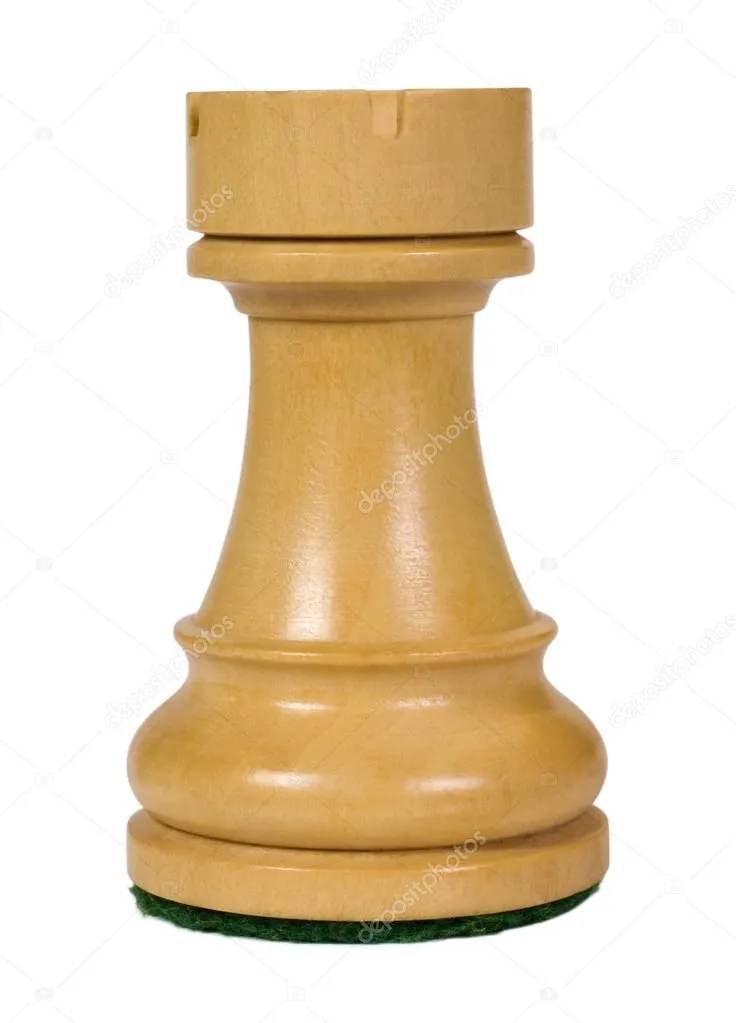El poderío de la Torre
 |  |
Bienvenid@ a mi blog. Espero que tengas lo mejor que la vida pueda entregarte durante el transitar por ella.
En esta ocasión, intentaré explicar un poco más sobre el juego de ajedrez. Como habrán visto, he tratado de publicar una serie de post en los que se ha hablado un poco de lo básico del deporte ciencia. Entendiendo los beneficios para quien practica este bello deporte, espero que sea de utilidad la información que he estado compartiendo con ustedes desde hace algunos días. En ese sentido, les invito a seguir leyendo sobre este deporte, estoy seguro que les generará grandes conocimientos para la vida. Es por ello, que en esta ocasión les hablaré de la Torre.
La Torre
Una de las piezas más poderosas dentro del tablero de ajedrez, es la torre. Esta pieza es representada como la figura de una Torre de cualquier castillo. En ese sentido, es necesario conocer que dicha pieza tiene un poderío sobre muchas otras, lo cual permite al jugador ejercer mucho más peso en el campo contrario, siempre y cuando se usa adecuadamente. La Torre es una pieza que puede abarcar como mínimo unas 14 casillas por lo cual, se demuestra que el poder de esta pieza, es bastante amplio. Así como en un reino en el que existe un castillo, las torres se ubican en cada esquina del tablero al iniciar la partida. Debemos recordar que por cada jugador, existen 2 torres. La posición inicial es como sigue a continuación:
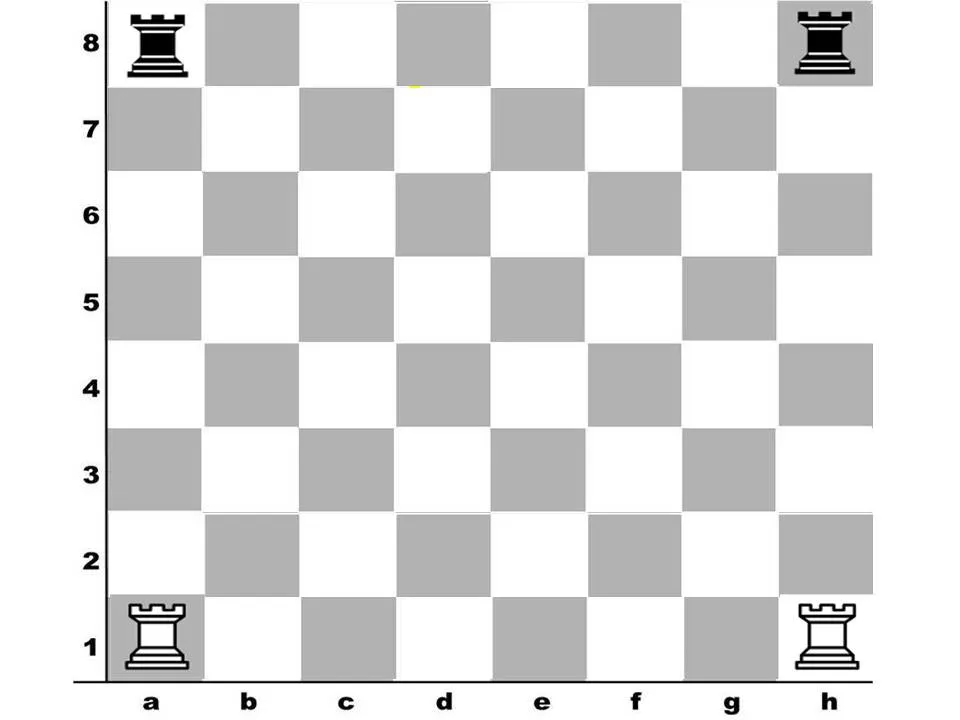
EL MOVIMIENTO Y CAPTURA
La cinética de la Torre es una de las más rápidas dentro del tablero. Esto se debe a la cantidad de casillas que puede abarcar como se dijo anteriormente, es por ellos que puede dirigirse de un punto a otro muy lejano en un solo movimiento. El movimiento de la Torre es así:
* Se desplaza solo por columnas o filas.
* Puede desplazarse por todas las casillas, tomando en cuenta lo anterior, siempre y cuando no haya piezas en su camino.
* Por su cualidad en el movimiento, la Torre es una de las piezas que puede moverse hacia “atrás o adelante” de acuerdo a lo que pretenda el jugador.
* Esta pieza no puede pasar por encima de las demás.
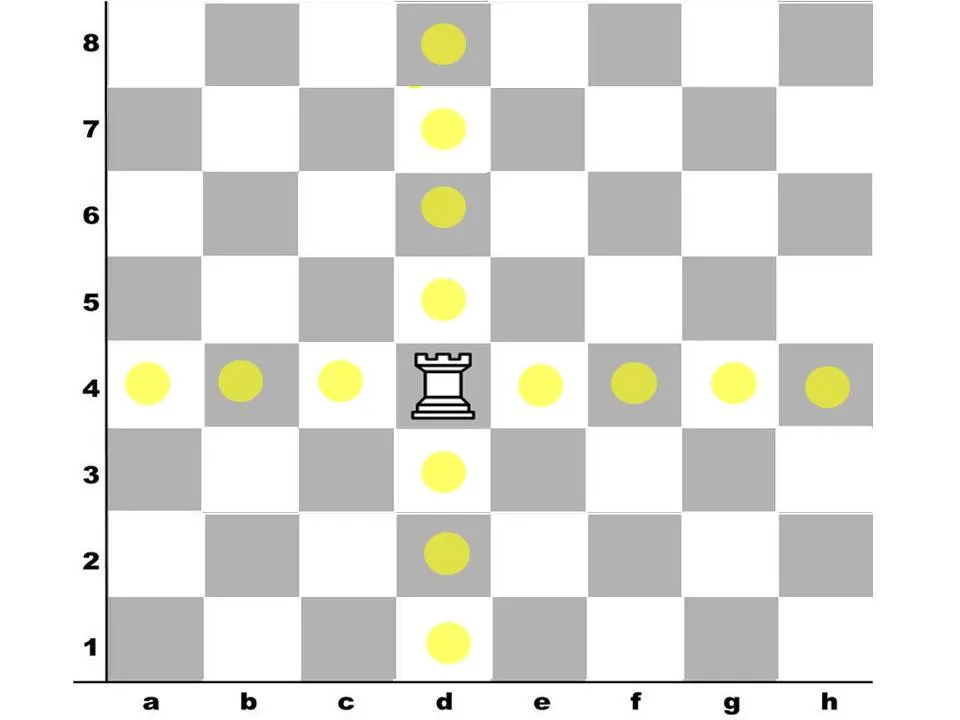
Luego de haber visto la forma en que se mueve la torre, se debe decir que la manera de Capturar: es de la misma forma en que se desplaza, es decir, siguiendo las mismas reglas. En caso de una captura, sencillamente se quita la pieza que se ha capturado y se coloca la torre en ese lugar. A continuación pueden ver (Imagen) que la Torre puede capturar a 4 piezas distintas, siguiendo por supuesto, el desplazamiento natural de la torre. En ese ejemplo, la Torre ha capturado la Dama.
|||
|-|-|
|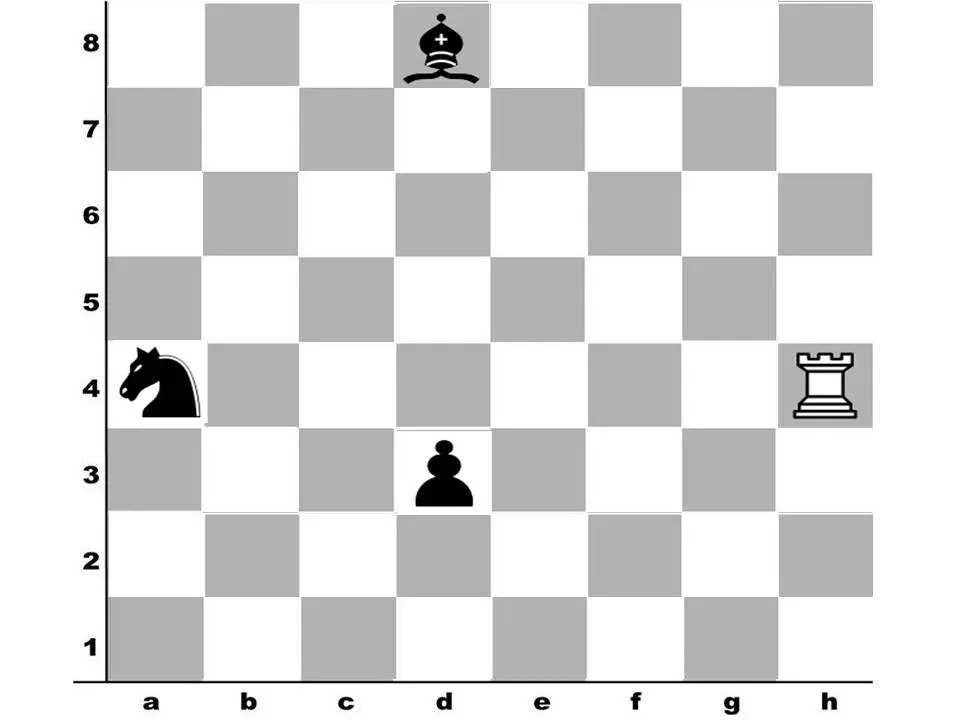

PODER EXTRA: EL ENROQUE
Ya se ha dicho con anterioridad, que el poder de la torre es bastante alto. Sin embargo, en este aspecto les quiero señalar sobre un “Poder Extra” que posee solamente la Torre, es decir, ninguna otra pieza posee esta característica especial. Para entender mejor el asunto, hagamos de cuenta que un Rey está bajo amenaza en su castillo, por lo general sale a su resguardo por alguna especie de laberinto y tal vez, sea justo hacia su Torre derecha o izquierda de su castillo. Pues, aquí sucede algo parecido, existe un movimiento entre el Rey y la Torre que se llama: enroque.
El Enroque
Para entender un poco más, hablaré sobre el enroque y su forma de realizar. Este es un movimiento que por lo general se usa como una estrategia para poner en resguardo a nuestro Rey durante la partida. Es un movimiento especial, en el que solo intervienen el Rey y una de sus Torres. Este movimiento es tan peculiar, que además es el único movimiento que permite mover 2 piezas en un mismo turno, a decir, la Torre y el Rey. Para la realización correcta de un Enroque, se debe tomar en cuenta lo siguiente:
* Es un movimiento que solo se realiza entre el Rey y una de sus propias Torres.
* Para realizar este movimiento el Rey se debe desplazar 2 casillas hacia la Torre que se pretende hacer el enroque.
* La Torre hacia donde se movilizó el Rey, debe dar la vuelta (pasar por encima) al Rey y colocarse a su lado.
* A pesar de moverse 2 piezas, este movimiento especial se considerará como 1 solo movimiento.
* Este movimiento solo se realiza en la primera fila.
* La Torre y el Rey que pretenden hacer el enroque, deben estar en sus casillas originales, es decir, no puede haberse movido dichas piezas.
* El Rey no puede estar bajo amenaza (jaque) en el momento de realizar el enroque.
* Durante la realización de este movimiento, el Rey no puede pasar por una casilla que se encuentra amenazada por una pieza contraria.
* Al terminar el movimiento, el Rey no puede quedar en una casilla que se encuentre amenazada. De lo contrario el movimiento no será válido.
* Para la ejecución de esta jugada, no pueden existir piezas propias o contrarias entre la Torre y el Rey que pretendan realizar el enroque.
* Este movimiento se realiza en un mismo turno, es decir, se mueven ambas piezas en un solo turno.
* Solo se puede hacer un enroque durante la partida.
NOTA: Se debe tener presente durante la realización del enroque, que respetando la regla de “Pieza Tocada, Pieza Jugada”, el movimiento inicial debe comenzar por el Rey y no por la Torre. Esto se debe, a que se mueve la Torre antes del Rey, se consideraría como que se ha querido mover la Torre por sí sola y no se estaría haciendo el Enroque.




Tipos de Enroque
Este pequeño inciso, es para decir que a la vista que existen 2 torres con la cuales se puede hacer el enroque, se les diferencia por el lugar hacia donde se moviliza el Rey. Por lo tanto, se le da el nombre de Enroque Corto o Enroque Largo de acuerdo a la Torre con la cual se ha realizado el enroque. Es decir, se le llama Enroque Corto al que se realiza entre el Rey y la Torre que se encuentra más cerca de dicho Rey (con la Torre del lado del Rey), en cambio se llama Enroque Largo al que se realiza con la Torre más alejada del Rey (con la Torre del lado de la Dama). Es necesario señalar, la ejecución del movimiento sigue siendo el mismo, solo es una breve clasificación que se hace para comprender mejor los aspectos tácticos y/o estratégicos durante la partida.
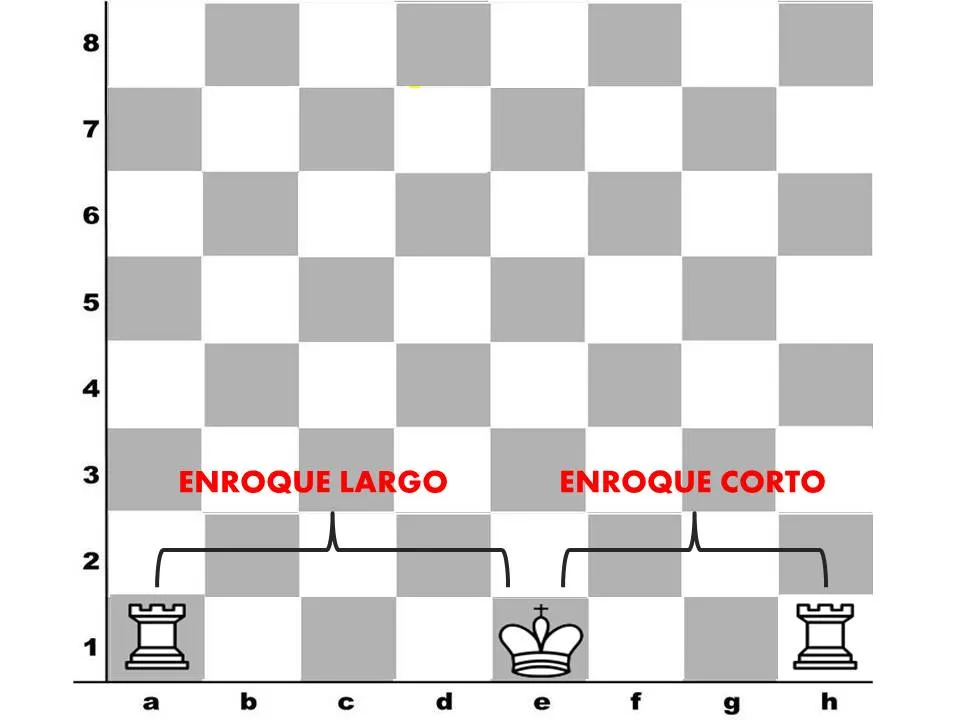
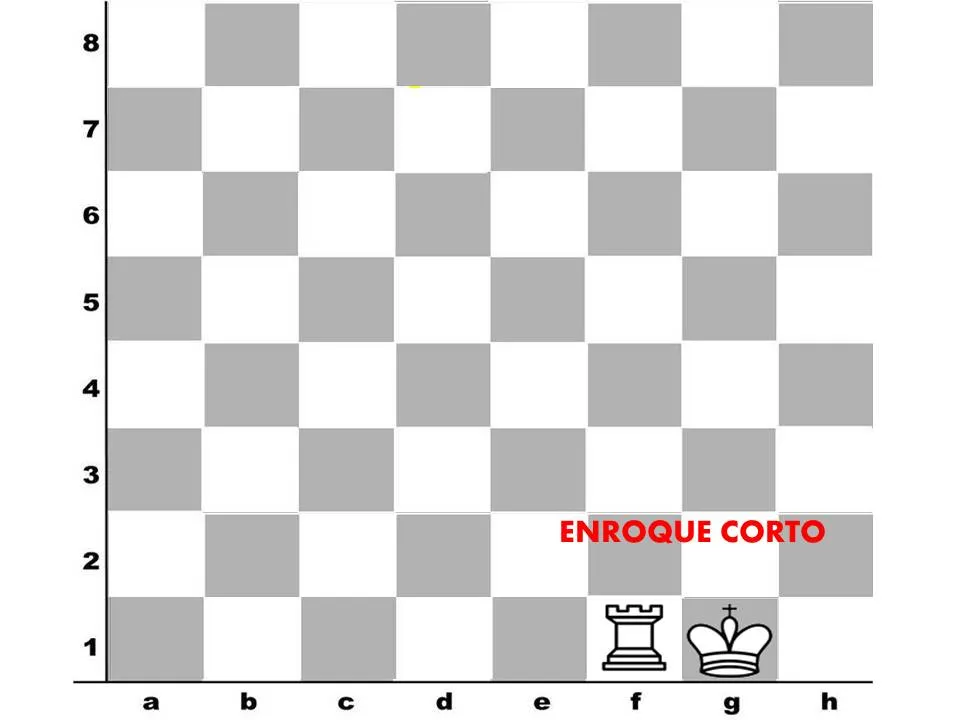
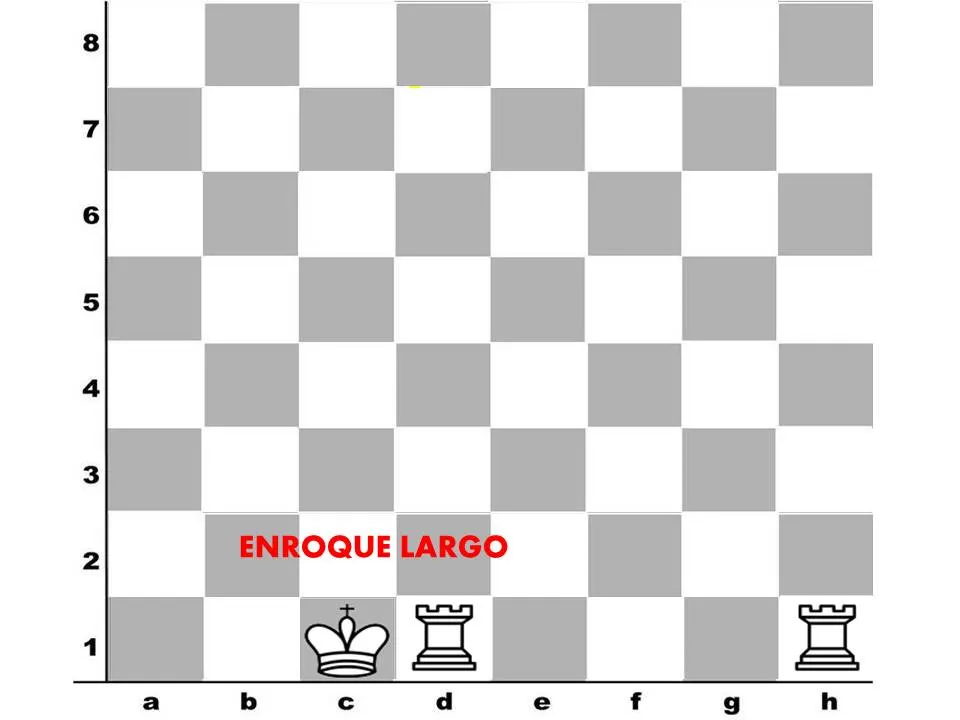

Espero que haya sido de utilidad la presente publicación. Agradezco a todos aquellos quienes de una u otra forma me han apoyado paulatinamente, entre ellos al amigo @stayoutoftherz, @schamangerbert, @eturnerx, @jaki01, @chessbrotherspro y otros que me han leído.

Para hacer un seguimiento de las publicaciones realizadas sobre el ajedrez, ver:
2.- Ajedrez: el Peón
Las referencias tomadas para esta publicación son de diferentes fuentes, en especial de los libros: José Raúl Ajedrecista, Preajedrez y Arbitraje para Docentes; todos del Uvencio Blanco.
Las imágenes usadas han sido creadas por mí con el Programa PowerPoint (Excepto aquellas que poseen las fuentes).
The might of the Tower
 |  |
Welcome to my blog. I hope you have the best that life can give you during your journey through it.
On this occasion, I will try to explain a little more about the game of chess. As you have seen, I have tried to publish a series of posts in which they have talked a little about the basics of sports science. Understanding the benefits for those who practice this beautiful sport, I hope the information that I have been sharing with you for a few days is useful. In that sense, I invite you to continue reading about this sport, I am sure that it will generate great knowledge for life. That is why this time I will talk about the Tower.
The Tower
One of the most powerful pieces on the chess board is the rook. This piece is represented as the figure of a Tower of any castle. In that sense, it is necessary to know that this piece has a power over many others, which allows the player to exert much more weight in the opposite field, as long as it is used properly. The Tower is a piece that can cover at least 14 squares, which is why it is shown that the power of this piece is quite broad. As in a kingdom where there is a castle, the towers are located in each corner of the board at the start of the game. We must remember that for each player, there are 2 towers. The starting position is as follows:

MOVEMENT AND CAPTURE
The kinetics of the Tower is one of the fastest on the board. This is due to the number of squares that it can cover as mentioned above, it is because of them that it can go from one point to another very far away in a single movement. The movement of the Tower is like this:
* Scrolls only by columns or rows.
* You can move through all the squares, taking into account the above, as long as there are no pieces in your way.
* Due to its quality in movement, the Tower is one of the pieces that can move "backwards or forwards" according to what the player wants.
* This piece cannot pass over the others.

After having seen the way the tower moves, it should be said that the way to Capture: is the same way it moves, it is say, following the same rules. In the event of a capture, the captured piece is simply removed and the tower placed there. Below you can see (Image) that the Tower can capture 4 different pieces, following of course, the natural displacement of the tower. In that example, the Rook has captured the Lady.
 |  |


EXTRA POWER: THE CASTING
It has already been said before, that the power of the tower is quite high. However, in this regard, I want to point out an “Extra Power” that only the Tower has, that is, no other piece has this special characteristic. To better understand the matter, let's pretend that a King is under threat in his castle, usually he goes out to his protection through some kind of labyrinth and perhaps, it is just towards his right or left Tower of his castle. Well, something similar happens here, there is a movement between the King and the Rook called: castling.
The Castling
To understand a little more, I will talk about castling and how it is performed. This is a movement that is generally used as a strategy to protect our King during the game. It is a special movement, in which only the King and one of his Towers intervene. This movement is so peculiar that it is also the only movement that allows you to move 2 pieces in the same turn, that is, the Rook and the King. For the correct execution of a Castling, the following must be taken into account:
* It is a movement that only takes place between the King and one of his own Towers.
* To carry out this movement the King must move 2 squares towards the Rook that he intends to castling.
* The Tower where the King moved, must turn around (pass over) the King and stand next to him.
* Despite moving 2 pieces, this special move will be considered as a single move.
* This move is only done in the first row.
* The Rook and the King that intend to castling must be in their original squares, that is, these pieces cannot have been moved.
* The King cannot be under threat (check) at the time of castling.
* During this movement, the King cannot pass through a square that is threatened by an opposing piece.
* At the end of the movement, the King cannot remain in a space that is threatened. Otherwise the movement will not be valid.
* For the execution of this move, there cannot be own or contrary pieces between the Rook and the King that intend to castling.
* This movement is carried out in the same turn, that is, both pieces are moved in a single turn.
* Only one castling can be made during the game.
NOTE: It must be borne in mind during castling, that respecting the rule of "Piece Touched, Piece Played", the initial movement must begin with the King and not with the Rook. This is due to the fact that the Tower is moved before the King, it would be considered as having wanted to move the Tower by itself and the Castling would not be being done.




Types of Castling
This small paragraph, is to say that in view that there are 2 towers with which you can castling, they are differentiated by the place where the King moves. Therefore, it is given the name Short Castling or Long Castling according to the Rook with which the castling was made. That is, it is called Short Castling to the one between the King and the Tower that is closest to said King (with the Tower on the King's side), instead it is called Long Castling to which is performed with the Rook furthest from the King (with the Rook on the Queen's side). It is necessary to point out, the execution of the movement remains the same, it is only a brief classification that is made to better understand the tactical and / or strategic aspects during the game.




I hope this publication has been useful. I thank all those who in one way or another have gradually supported me, including my friend @stayoutoftherz, @schamangerbert, @eturnerx, @jaki01, @chessbrotherspro and others who have read me.

To keep track of the publications made on chess, see:
2.- Chess: the Pawn
The references taken for this publication are from different sources, especially from the books: José Raúl Ajedrecista, Prejedrez y Arbitraje para Educadores; all of the Uvencio Blanco.
The images used have been created by me with the PowerPoint Program (Except those that have the fonts).

